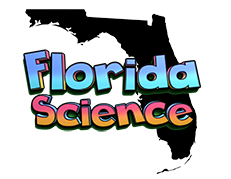SC.3.L.14.1 Plant Structures and Functions
What Are Plants?
Plants are living things (organisms) that can produce, or make, their own food. There are many different kinds of plants. In this lesson, we will investigate the parts of flowering plant and their functions (jobs).
Flowering plants have similar parts. The main parts of a flowering plant are the roots, stem, leaf, flower, fruit, and seed. Each of these parts has a function, or job, that helps the plant to survive and reproduce.
The roots of a plant provide support and water and nutrient transport for the plant. Without the roots, the plant would have no support and would fall over. The roots absorb, or soak up, water from the ground. The roots then move the water to the stem. The water the roots absorb from the ground contains nutrients the plant needs. Nutrients are minerals and vitamins that help the plant to survive.
The stem also provides support for the plant. The stem lifts the plants branches and leaves to help the plant get the air and sunlight it needs to survive. The stem transports, or moves, water and nutrients from the roots to the other parts of the plant.
At the ends of branches, the plant has many leaves. Leaves provide food for the plant. Plants make their own food by combing water and carbon dioxide in the air with energy from the Sun. The plant stores energy as sugars to use to build new plant parts.
Plants reproduce in many ways. To reproduce means to make new living things of the same kind. Flowering plants use flowers to produce for reproduction. Flowers contain the parts needed for the plant to make the seeds it needs to grow new plants of the same kind. Flowering plants sometimes grow their seeds in fruits. Fruits provide food for the new plant when it begins to grow. Fruits can also help the plant to spread its seeds. When an animal east the fruit of a plant, the seeds will often pass through the animal’s digestive system. The animal can drop the seeds away from the parent plant giving the new plant the space it needs to grow.




